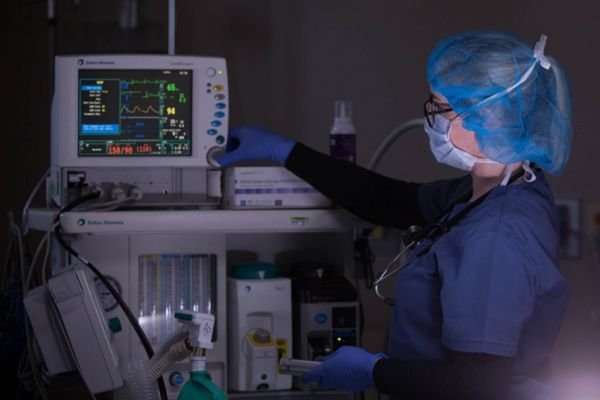If you’re considering a career in healthcare that doesn’t require a medical degree but still plays a vital role in surgical procedures, becoming an anesthesia tech might be the perfect path. One of the most common questions aspiring professionals ask is: “How much does an anesthesia tech make in 2025?” This guide breaks down the latest salary data, influencing factors, and job outlook to give you a complete picture.
What Does an Anesthesia Tech Do?

Anesthesia technicians (or technologists) support anesthesiologists, nurses, and surgical teams before, during, and after procedures. Their responsibilities typically include:
- Preparing and maintaining anesthesia equipment
- Assisting with patient monitoring
- Ensuring the availability of necessary supplies
- Performing routine maintenance and troubleshooting
They play a crucial role in patient safety and surgical efficiency.
Average Anesthesia Tech Salary in 2025
As of 2025, the average annual salary for anesthesia tech technician in the United States is approximately $53,000 to $68,000, depending on location, certification, and experience. Here’s a quick breakdown:
| Experience Level | Average Annual Salary (USD) |
| Entry-Level (0–2 yrs) | $45,000 – $52,000 |
| Mid-Level (3–5 yrs) | $55,000 – $62,000 |
| Senior-Level (6+ yrs) | $63,000 – $75,000+ |
Top-Paying States for Anesthesia Techs in 2025
Salaries vary significantly based on geography due to demand, cost of living, and hospital budgets. The top-paying states for anesthesia tech technicians in 2025 are:
- California – $72,000+
- New York – $68,500+
- Massachusetts – $67,000+
- Washington – $66,000+
- Texas – $64,000+
Factors That Affect Salary
Several factors influence how much an anesthesia tech earns:
1. Certification
Holding certifications like the Certified anesthesia Technologist (Cer.A.T.T.) can significantly boost earnings.
2. Education
Completing an associate degree in anesthesia technology or a related healthcare field often results in higher pay compared to on-the-job training.
3. Work Environment
Anesthesia techs employed in surgical hospitals, outpatient centers, and large metropolitan facilities tend to earn more than those in smaller clinics or rural locations.
4. Shift Differentials
Night, weekend, and holiday shifts often come with additional pay incentives.
Job Outlook and Growth in 2025
The demand for skilled anesthesia techs continues to grow in 2025, driven by:
- An aging population requiring more surgical procedures
- Expanding healthcare services in urban and rural areas
- A greater emphasis on operating room efficiency and safety
According to the U.S. Bureau of Labor Statistics, related healthcare support roles are projected to grow by 7–9% through the decade.
Is It a Good Career Choice?
Yes—anesthesia technology offers strong job stability, good pay, and opportunities for advancement. For those interested in healthcare but not looking to spend years in medical school, this is a rewarding and accessible path.
Final Thoughts
If you’re wondering “Is being an anesthesia tech worth it in 2025?” — the answer is a strong yes. With competitive salaries, increasing demand, and meaningful work supporting patient care, this role continues to be a smart and fulfilling career option.
